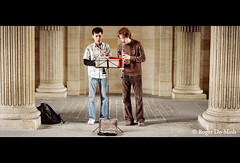It is a common misconception that Wolfgang Amadeus Mozart had a dislike for the flute. This misconception is held not only by untrained musicians but also by well-educated and trained musicians. The reason for this mistaken belief is attributed to Mozart’s flute quartets. In a letter to his father, he expressed frustration, stating, “It is not surprising that I have not been able to complete them, for I never have a single quiet hour here. I can only write at night, so I cannot get up early either; besides, one is not always in the mood for working. I may, to be sure, scribble down something for the whole day long, but a composition of this kind goes out into the world, and naturally, I do not like to have reason to be ashamed of my name on the title page. Moreover, you know that I become very weak when I am obliged to write for an instrument which I cannot bear. Hence, as a diversion, I compose something else…” (February 14th, 1778).
While this letter may seem to suggest a hatred for the flute, the reality is that Mozart was simply frustrated with the circumstances. His benefactor, Willem van Britten De Jean, failed to pay him the promised amount, and the quartets were taking time away from composing his opera, which likely agitated him. These pieces were supposedly a means for him to earn money for “a Dutchman in the Indies” (referring to De Jean), who was an amateur flutist. The misconception is further fueled by the fact that flutes are absent from many of his chamber music compositions for winds. In truth, Mozart enjoyed the flute and wrote many exquisite flute parts in his symphonies and other works. The concertos and quartets he composed for the flute are considered some of the finest music ever written for the instrument. These quartets are staples of the repertoire when it comes to chamber music for the flute, showcasing Mozart’s charm and flair.
The Quartet in A Major is the fourth of the four quartets Mozart composed. It was created in 1786 and is listed as Köchel number 298. However, this Köchel number is misleading, as the quartet dates from a much later period than the low number suggests. The work is considered the most straightforward of the quartets, while the compositions of the others are somewhat ambiguous. The quartet consists of three movements: an Andante theme and variations, a Menuetto and Trio, and a Rondo (Allegro grazioso). The first movement is a parody work with various themes connected to some of Mozart’s acquaintances and is believed to have been composed for them. Mozart’s sense of humor shines through in the heading of the third and final movement, “Rondieaoux – Allegretto grazioso, but not too fast, nor too slow. So-so – with good elegance and expression.” Even the original manuscript was received by Baron von Jacquin, a close friend of Mozart’s. These pieces were intended for home performance rather than large concert venues.
The initial movement of the quartet is an Andante with a theme and variations based on the song “An die Natur” composed by Franz-Anton Hoffmeister, who was a publisher in Vienna and also a flutist. Interestingly, Hoffmeister himself wrote a flute concerto. The Menuetto movement is derived from a French folk song, and the final movement is a parody of an arietta from Paisiello’s opera buffa “Le gare generose,” which Mozart heard in Prague in January 1787. Another connection to Mozart’s acquaintances is that the arietta was particularly associated with Nancy Storace, who was one of Mozart’s friends and portrayed the character of Susanna in “The Marriage of Figaro.”
When listening to classical music, it is important to consider the performance practices of the time. There were specific ways of playing expected from musicians of that era, partly due to the stylistic expectations and the limitations of the instruments. One aspect to keep in mind is to “decrescendo through the bar.” This means starting with a strong down-bow gesture and gradually decreasing the volume throughout the short notes. While this technique may not be applied in every bar, it can create a sense of momentum and sparkle in many instances. This practice may have originated from the use of convex bows on violins, which naturally produced such a sound. Another aspect to pay attention to is the appoggiatura, which is a remnant from the Baroque period and is related to the use of convex bows. The appoggiatura involves creating tension with the leading tone or upper neighbor tone and then resolving it, contributing to the overall sense of momentum and drive. It is a beautiful technique that can truly ignite the listener’s emotions.
The flutes of that time were also limited in certain aspects compared to modern flutes. One notable difference was in vibrato. The older Baroque flutes could not produce vibrato through breathing in the same way as modern flutes, so it was used as an ornament and created using finger techniques, similar to a trill. Additionally, Baroque flutes had a narrower range, typically reaching only about a G6 or Ab6. The sound projection of different registers was also distinct from that of today’s flute, with the higher registers being particularly loud.
One performance practice specific to Mozart is understanding his character as an opera composer. This is evident in all of his music, including these quartets. Each section of the quartets conveys its own mood and emotion very clearly. Every note carries significance, and Mozart’s music does not allow for imperfections as there is no place to hide. Everything is exposed. When played with the appropriate performance practices, this music takes on a whole new character that is simply beautiful.
Manuel Marino is a seasoned Senior Producer, Music Composer, and Artist with over a decade of experience. He specializes in branded entertainment across various mediums, including video games, films, and advertising campaigns. With 20+ years as a game music composer, Manuel has worked on numerous platforms, creating diverse orchestral soundtracks. HIRE ME


 Manuel is a passionate, driven, and techsavvy AV technician,
Manuel is a passionate, driven, and techsavvy AV technician, 


